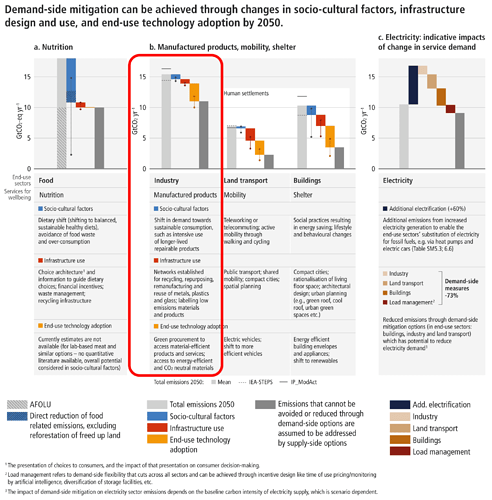As you’ll probably have heard, the UN’s climate change research body (the IPCC) released their latest report on Monday. This time the focus was on ways we can tackle climate change.
The report itself is a whopping 3675 pages long, but various summaries are starting to emerge. We particularly like this summary from Carbon Brief.
One key part for us here on Restarters is that—for the first time—it focused a whole chapter on ‘demand-side’ solutions, including consumption patterns.
In fact, the report states that:
Choice architecture can help end-users adopt, as relevant to consumers, culture and country contexts, low GHG intensive options such as […] sustainable consumption by intensive use of longer-lived repairable products.
To illustrate that point, they included the following figure that shows how repairable products, networks for recycling, repurposing, remanufacuturing and reuse, and green procurement can play a role in reducing CO2 emissions (I’ve outlined the relevant section in red):
(click/tap the image to enlarge it)
This implies that we could potentially save gigatonnes of CO2 through behavioural change (like community repair events) and policies (like the Right to Repair) that prioritise consuming less and (re)using what we already have for longer. And while small compared to changing what we eat, that’s still a massive impact in absolute terms.
I’m still reading through the report, so there may well be more that I haven’t found yet.
Has anyone spotted anything else interesting?

